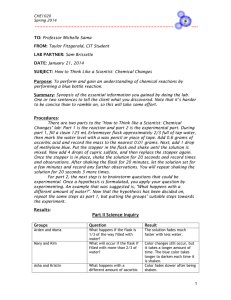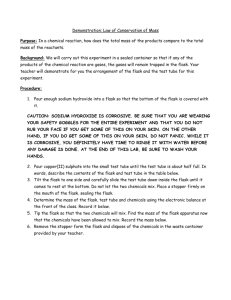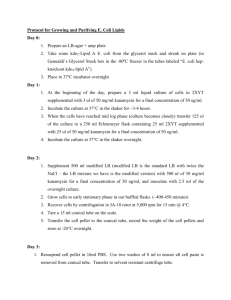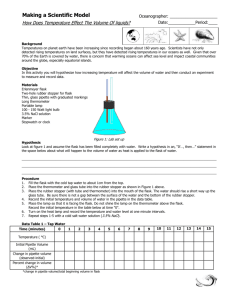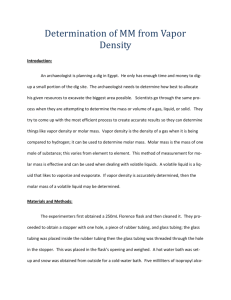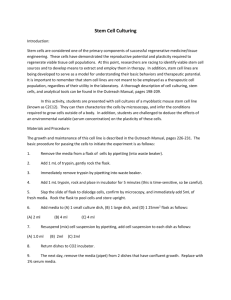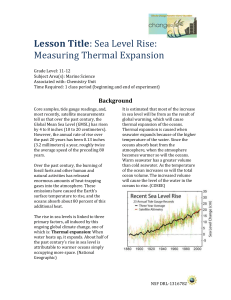Density Demonstrations
advertisement
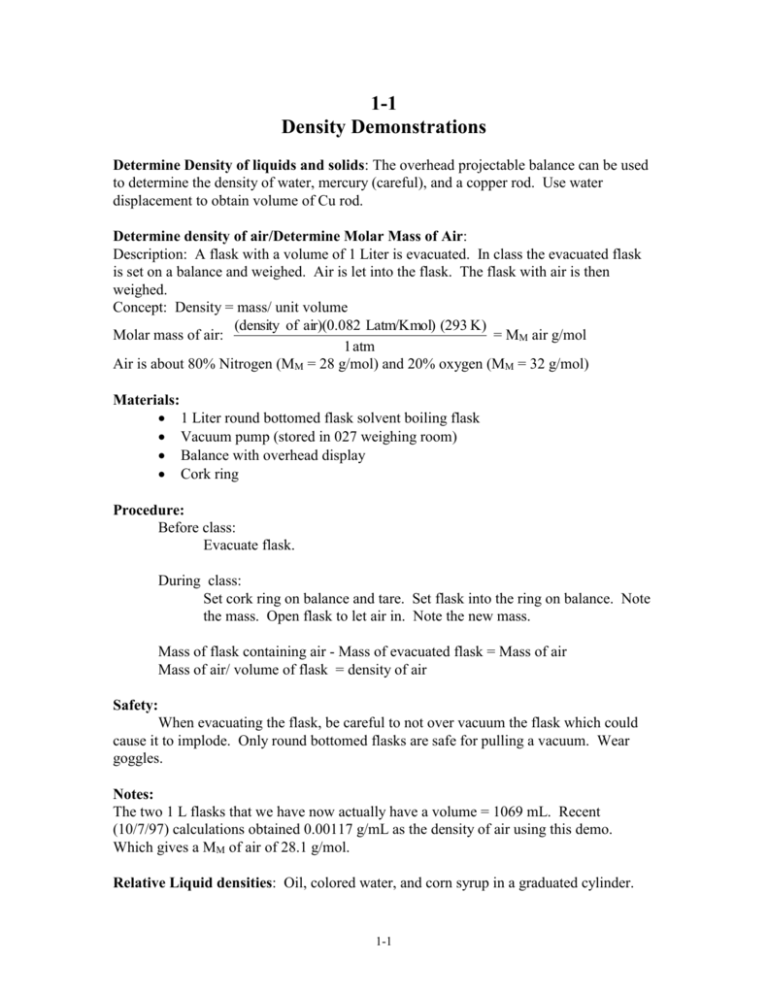
1-1 Density Demonstrations Determine Density of liquids and solids: The overhead projectable balance can be used to determine the density of water, mercury (careful), and a copper rod. Use water displacement to obtain volume of Cu rod. Determine density of air/Determine Molar Mass of Air: Description: A flask with a volume of 1 Liter is evacuated. In class the evacuated flask is set on a balance and weighed. Air is let into the flask. The flask with air is then weighed. Concept: Density = mass/ unit volume (density of air)(0.082 Latm/Kmol) (293 K) Molar mass of air: = MM air g/mol 1 atm Air is about 80% Nitrogen (MM = 28 g/mol) and 20% oxygen (MM = 32 g/mol) Materials: 1 Liter round bottomed flask solvent boiling flask Vacuum pump (stored in 027 weighing room) Balance with overhead display Cork ring Procedure: Before class: Evacuate flask. During class: Set cork ring on balance and tare. Set flask into the ring on balance. Note the mass. Open flask to let air in. Note the new mass. Mass of flask containing air - Mass of evacuated flask = Mass of air Mass of air/ volume of flask = density of air Safety: When evacuating the flask, be careful to not over vacuum the flask which could cause it to implode. Only round bottomed flasks are safe for pulling a vacuum. Wear goggles. Notes: The two 1 L flasks that we have now actually have a volume = 1069 mL. Recent (10/7/97) calculations obtained 0.00117 g/mL as the density of air using this demo. Which gives a MM of air of 28.1 g/mol. Relative Liquid densities: Oil, colored water, and corn syrup in a graduated cylinder. 1-1 An H2O ice cube floats in liquid H2O but floats in rubbing alcohol. A can of diet coke floats in water while a can of regular coke sinks (can determine density of sugar versus NutraSweet using balance). Heavy Water Density Demo: H2O ice will float in liquid H2O; D2O (deuterium oxide) ice will sink in liquid H2O. Note: rescue the D2O immediately melt and store in tightly sealed container for future use. Density of Gases: Fill balloons with He, Ar, and CO2. The He balloon will rise while the others fall. Fill a 1 Liter beaker with a gas and and cover with a watch glass. Open it over a candle flame. The candle flame will stay lit when a flask of He is opened over it. CO2 (from dry ice) and Ar will pour down over candle and extinguish the flame. 1-1



